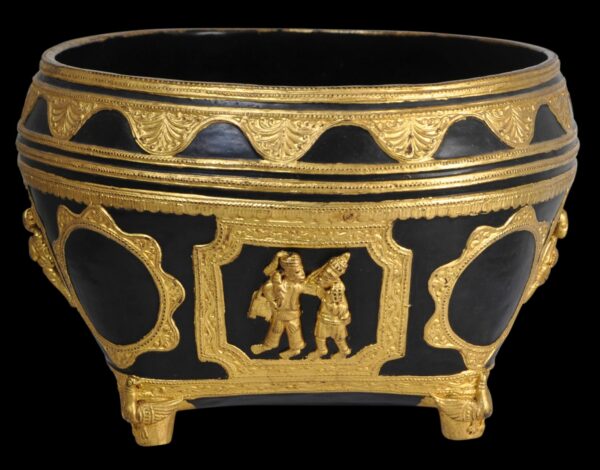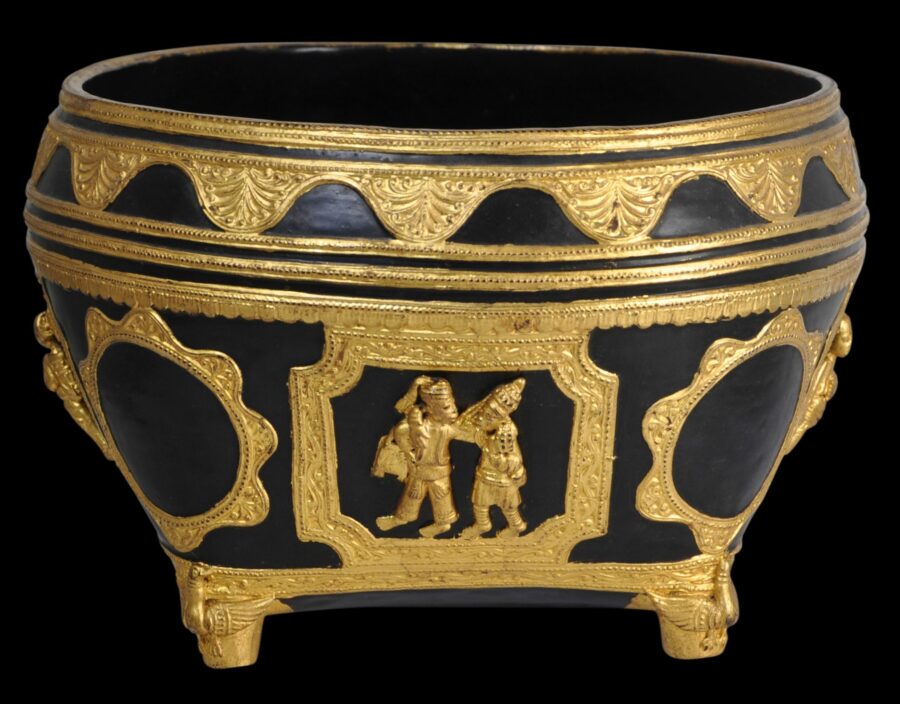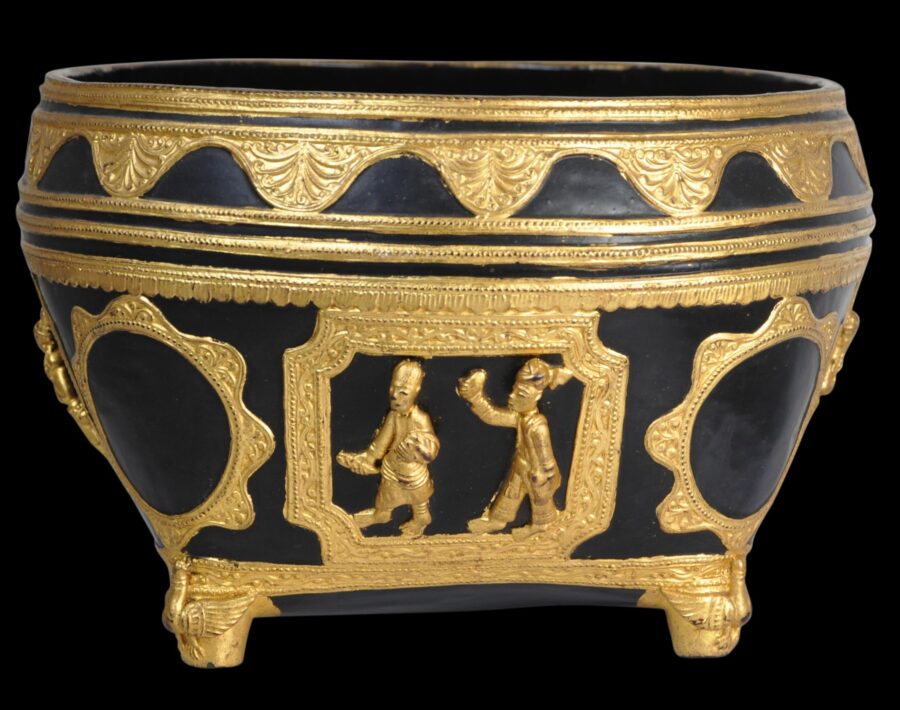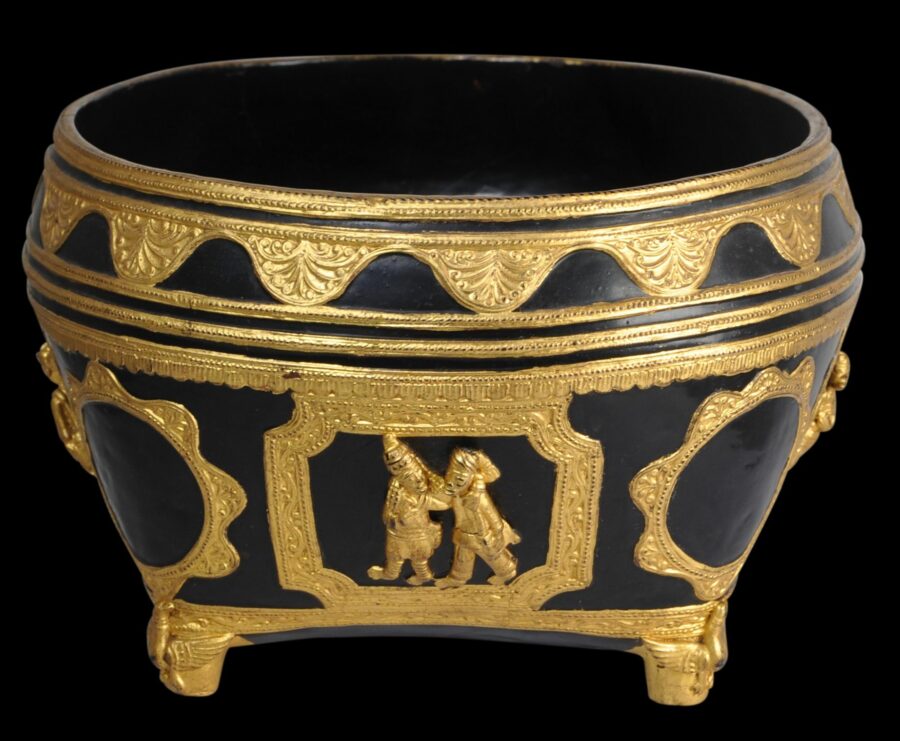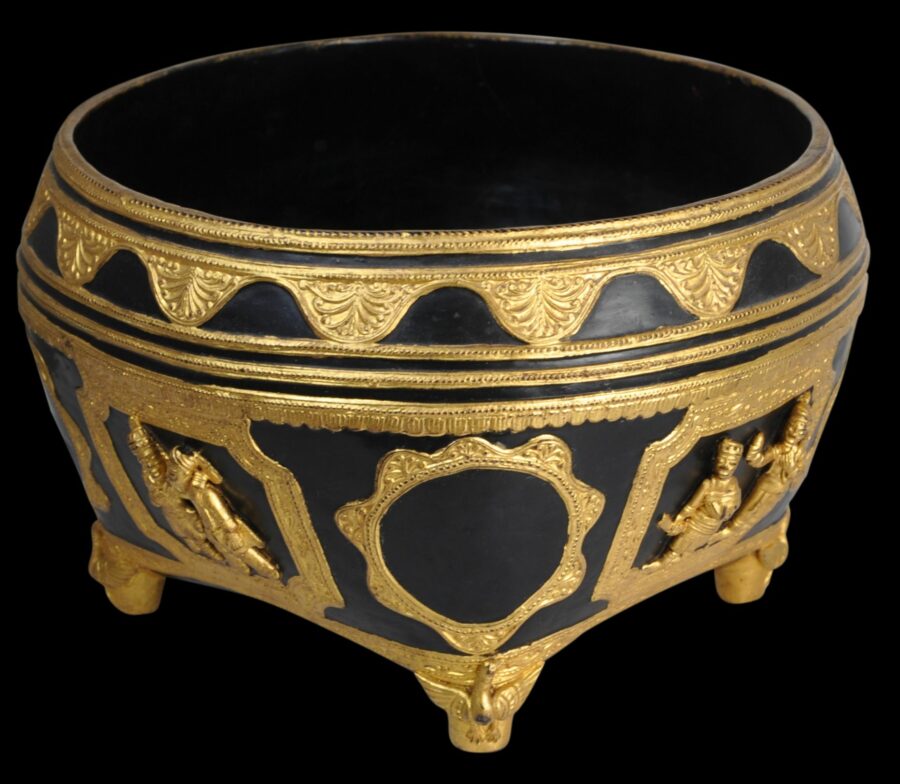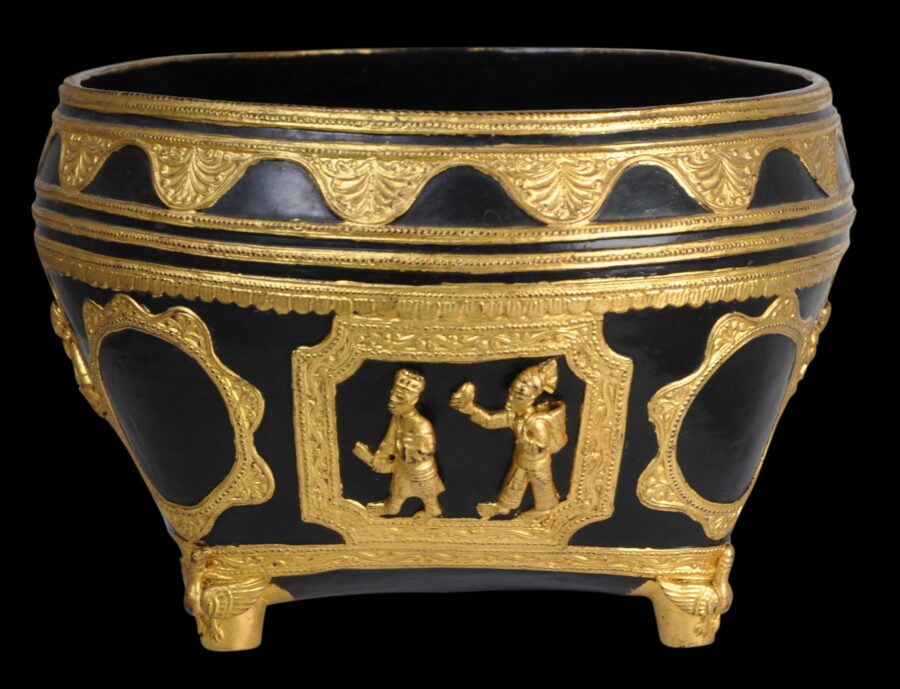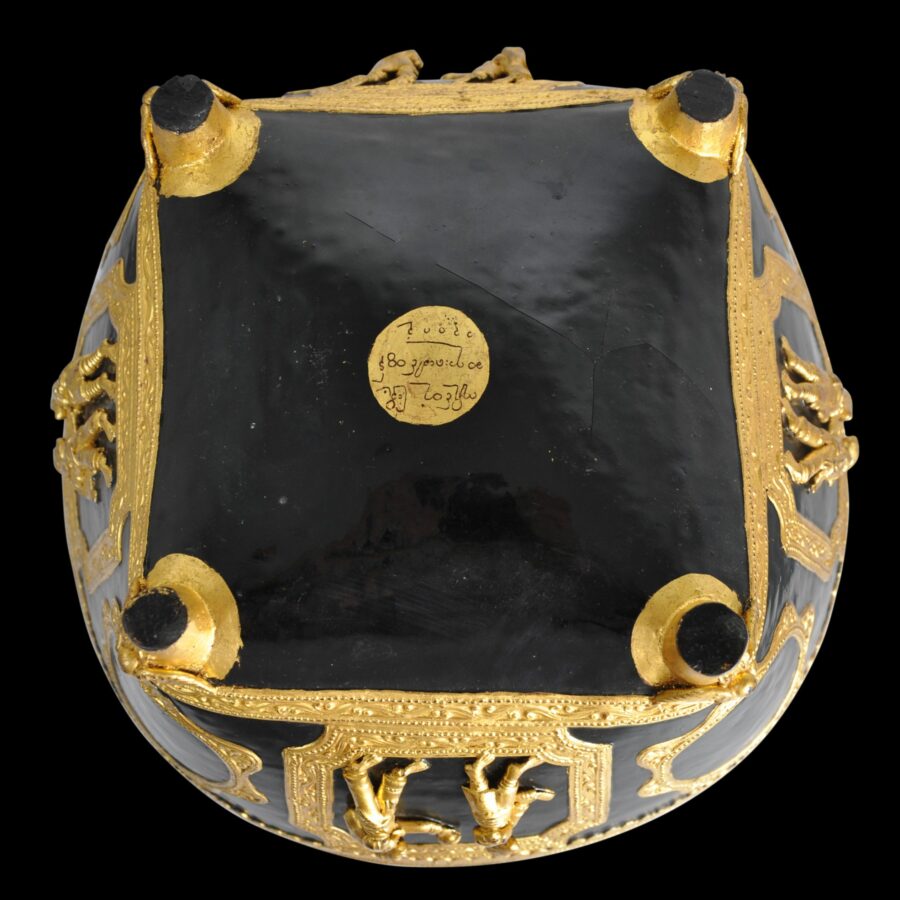This finely executed bowl of lacquer over a woven bamboo base has a series gilded (from high-carat gold leaf) panels of figures in high-relief dressed in the indigenous costumes of Kengtung and surrounding areas including the Akha, Khun, Lahu and Khamu, against a black ground, interspersed with large roundels with scalloped outer borders. Singer (1991) concludes that each of the costumed figures used to decorate such bowls were not the product of moulds but in fact were made individually by hand.
Both a broad, gilded border at the top, and a thin border towards the base, are decorated with fine thayo work – a process whereby thin, rolled strands of lacquer and ash putty are applied in patterns.
The four short feet are decorated with crows, wings outstretched. The crow is thought to be associated with legends relating to the founding of Kengtung (Fraser-Lu, 2000).
The underside of the base has a central gilded cartouche with Burmese script. It names the maker – possibly Hsaya Maung Htun and names Kengtung as the place of manufacture.
Surviving Kengtung bowls are not common. Those in fine condition are rarer still.
Kengtung became known for producing lacquerware rice baskets (ko-kau-te) that originally started out plain but became elaborately embellished with medallions, bands of scrolling foliage and human figures in indigenous costume in the first part of the twentieth century. Originally such baskets were used to hold rice flour at religious festivals, and also were used as presentation pieces. Bowls made using this technique are illustrated in Fraser-Lu (222, p. 165-6), Isaacs & Blurton (2000), Conway (2006, p. 135), and Singer (1991).
Kengtung was the largest and easternmost of the Shan states and was ruled by a prince from the Tai Khoen ethnic group. It has had a small lacquerware industry since the eighteenth century.
References
Conway, S., The Shan: Culture, Arts & Crafts, River Books, 2006.
Fraser-Lu, S., Burmese Crafts: Past and Present, Oxford University Press, 1994.
Fraser-Lu, S., Burmese Lacquerware, White Orchid Books, 2000.
Isaacs, R., & T.R. Blurton, Burma and the Art of Lacquer, River Books, 2000.
Singer, N., ‘Jengtung Lacquerware’ in Arts of Asia, September-October 1991.


